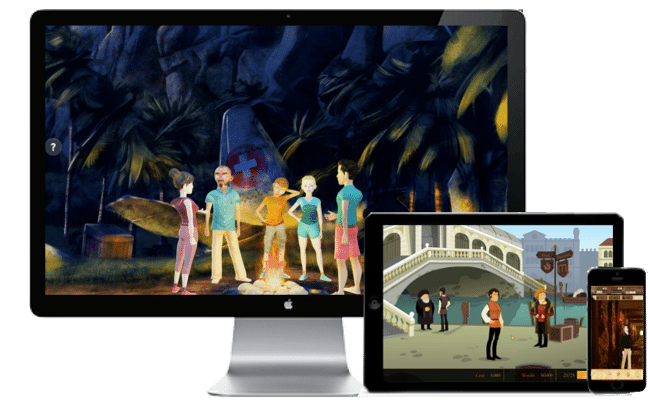Do you know which challenges will corporate training face in 2016? Implementing a training project for the workers in our organization means facing a series of challenges that vary with time.
Years ago the priority was, among other things, to have high quality “physical” material and qualified personnel to conduct the training. Then online courses came, which presented new dilemmas that were gradually solved (Internet access, appropriateness of contents in the digital environment, etc.). With the advent of game-based learning and other ways of learning, training has, once again, had to overcome new limits. These are the 5 great challenges that corporate training will face in 2016:
1. Including audiovisual and interactive content
The challenge for 2016 is still to offer audiovisual content and not just more and more texts to be displayed on a computer screen. It is about interacting and obtaining skills or knowledge through practice and this is only possible through audiovisual and interactive content that is really efficient for the student.
You may be interested: Effective Corporate Training: The Positive Effects of Video Games (Infographic)
2. Synthetizing contents for an effective learning
In this age of communication, it is very easy to have a lot of information on almost any topic. Yet another challenge faced by corporate training for 2016 is knowing how to summarize the content so it can be shown to students in an understandable, clear and accessible way. Each training program must be organized in well-structured modules or topics, and emphasize the basics so that they will be correctly (and actually) assimilated by the students.
3. Eliminating “fillers”
The challenge for this year is to remove the “filler” contents to make learning a useful and profitable investment. Unnecessarily broadening the content of any training is counterproductive to learning. People who take up training, do so in order to learn new knowledge and skills, and will only be able to absorb a certain amount of data. To extend the duration of the training for no reason, to lengthen texts without purpose or adding repetitive and trivial details will only turn the process of learning into something annoying and unproductive.
Read more: Simulators in Corporate Training
4. Incorporating personalized evaluation systems
One of the greatest concerns of Human Resources departments when implementing a training activity is the evaluation system. Determining whether workers have successfully learned or not and whether that which has been learnt is directly applicable to their work positions or not, is essential for those who invest in training. The challenge is to incorporate a system that is able to show the degree of learning of the participants, without necessarily implying a classic “test” or “exam”.
You may also like: The Game as the New Strategy in Human Resources
5. Enabling content updating
Another of the challenges being faced by corporate training is the ability to update its content. Among the advantages of the digital environment is the ease of access to them and the possibility of updating them, so that the information offered is always current.
How does Gamelearn respond to these 5 challenges?
1. Video games to practice
At Gamelearn, we are positive that game-based learning is the answer to all these challenges in 2016. Our simulators or Serious Games incorporate highly interactive content to provide effective solutions to these challenges.

2. Synthetized and efficient contents
These are learning solutions whose content is structured in a simple way to facilitate the student’s understanding and highlight the educational potential. 92% of the students who learn with this game-based learning methodology complete the courses.
You may be interested: We Are Tired of Boring e-Learning. What About You?
3. Serious games with no “fillers”
Merchants, Triskelion or Pacific are serious games without “fillers”, equivalent to a two-day classroom training. 97% of the students consider them directly applicable to their work positions.
4. Constant and personalized evaluation
Gamelearn’s products also include gamification techniques such as the use of scores, rankings or the beating of levels, which show the degree of learning of the participants. Thus, the word “test”, so rejected by students, is taken out of the equation.
Game-based learning and simulators offer innovative systems through which the students do not “tell” what they learn, but “do” what they have learned, because practice is an essential part of the learning process.
What challenges do you think corporate training will face in 2016?





